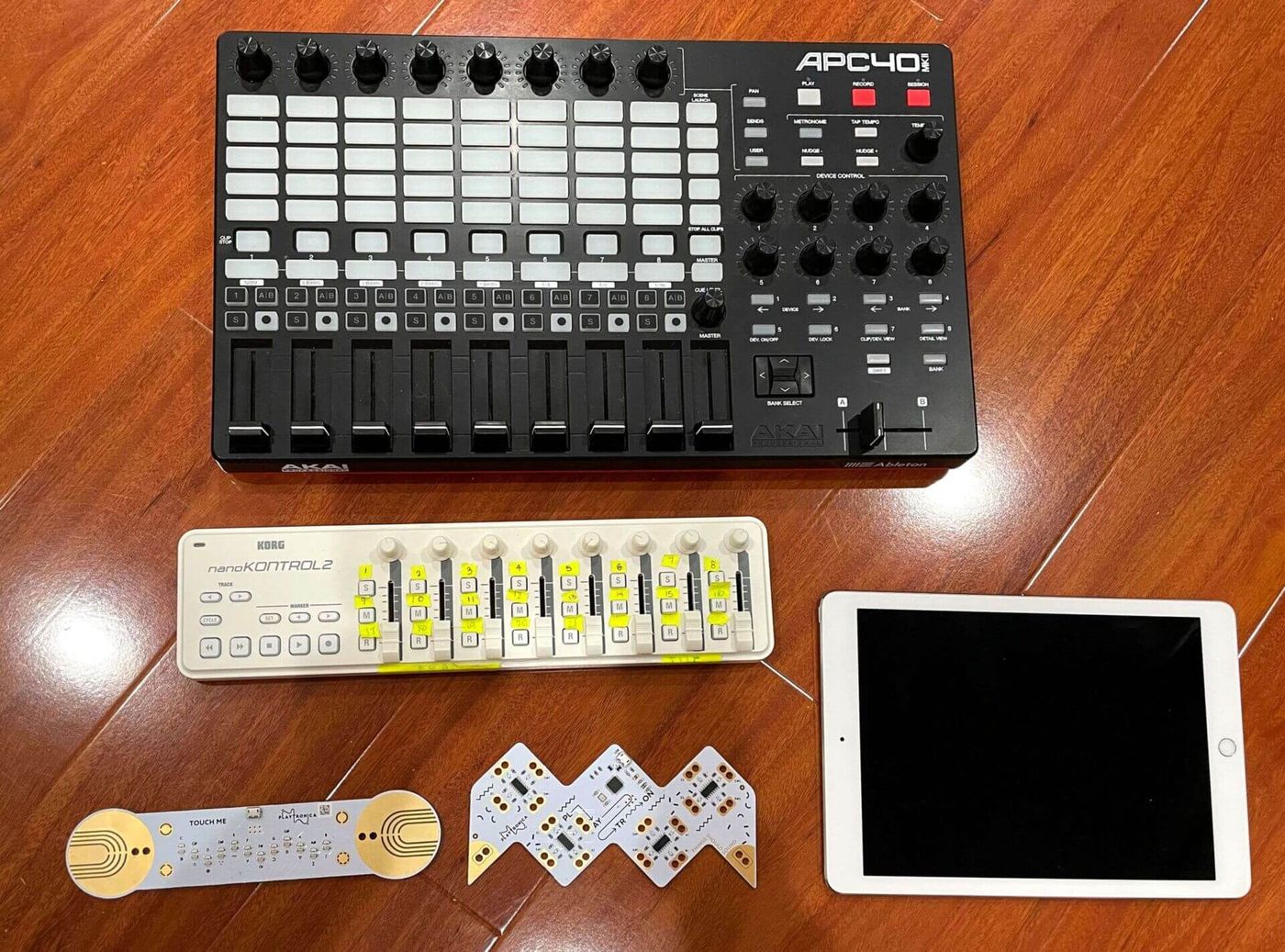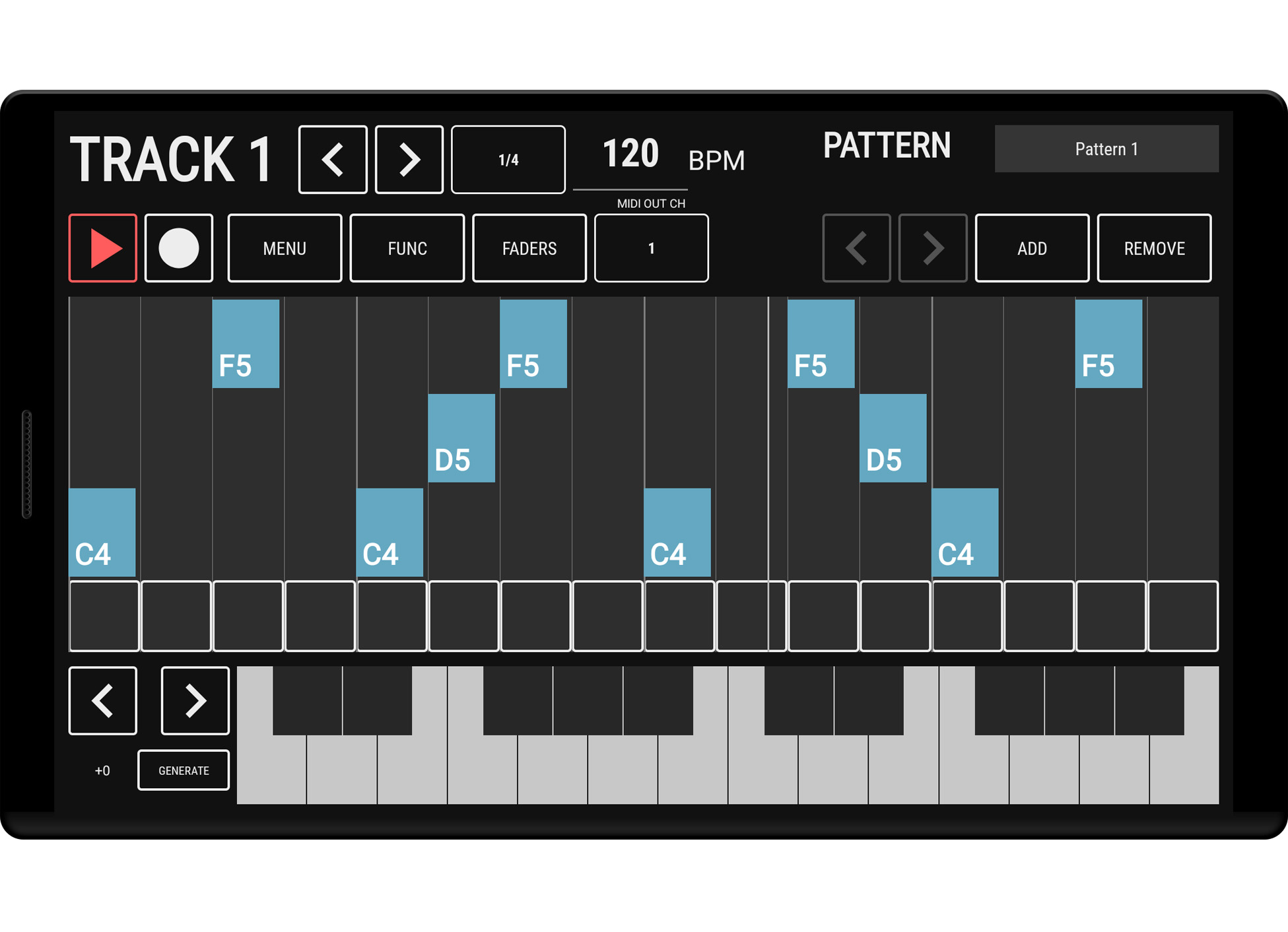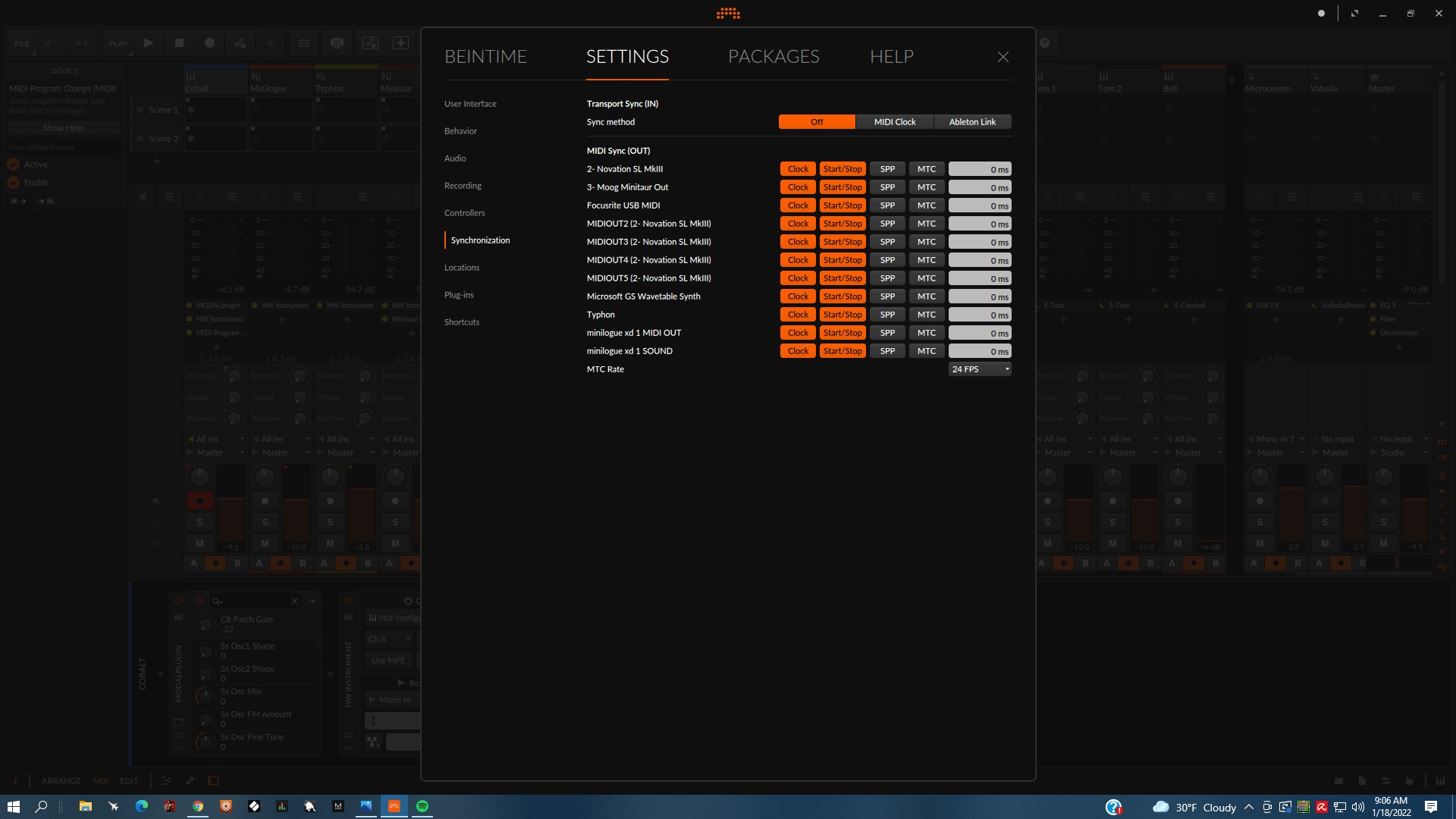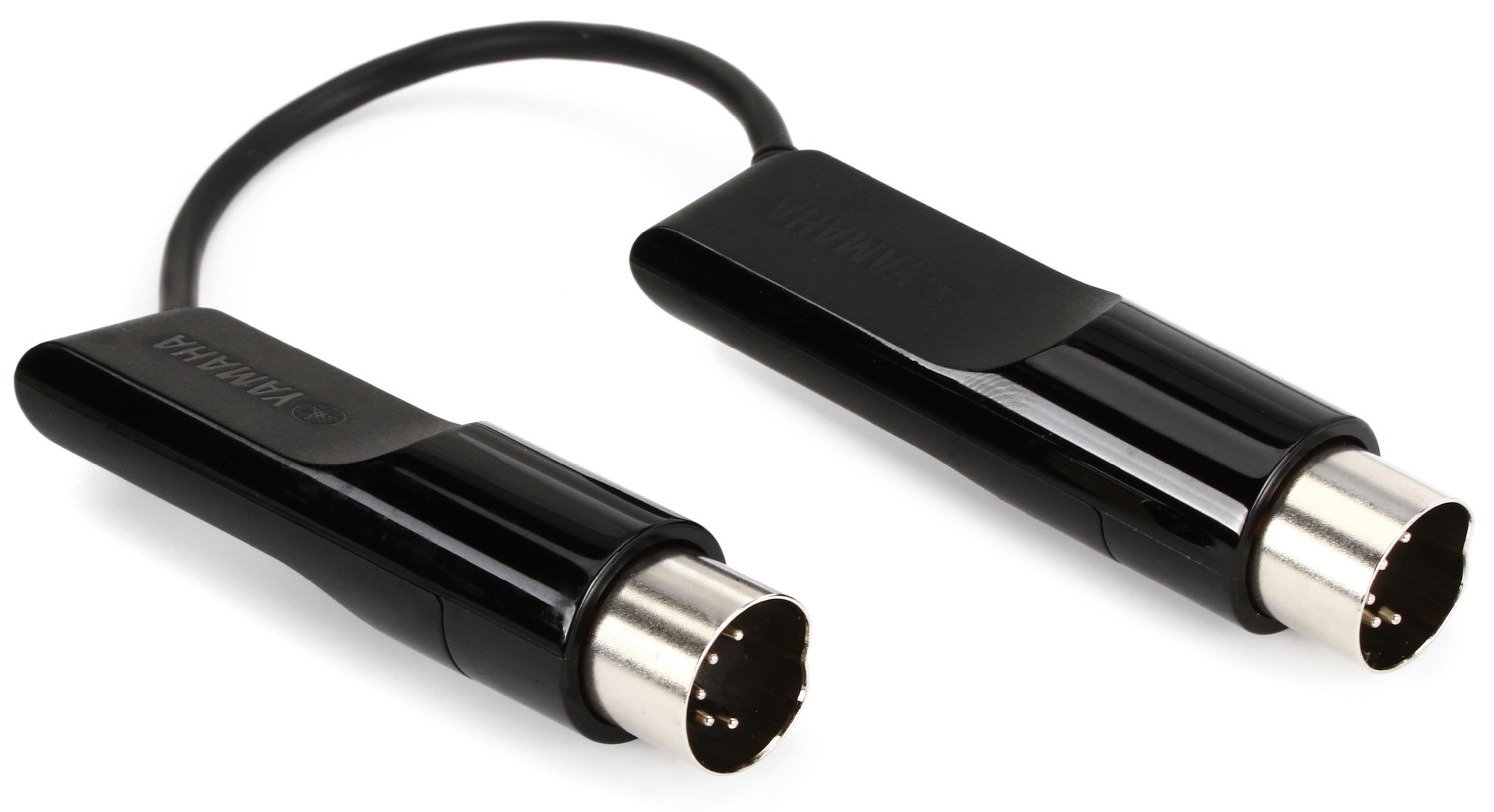Home>Production & Technology>MIDI>What Is The MIDI?
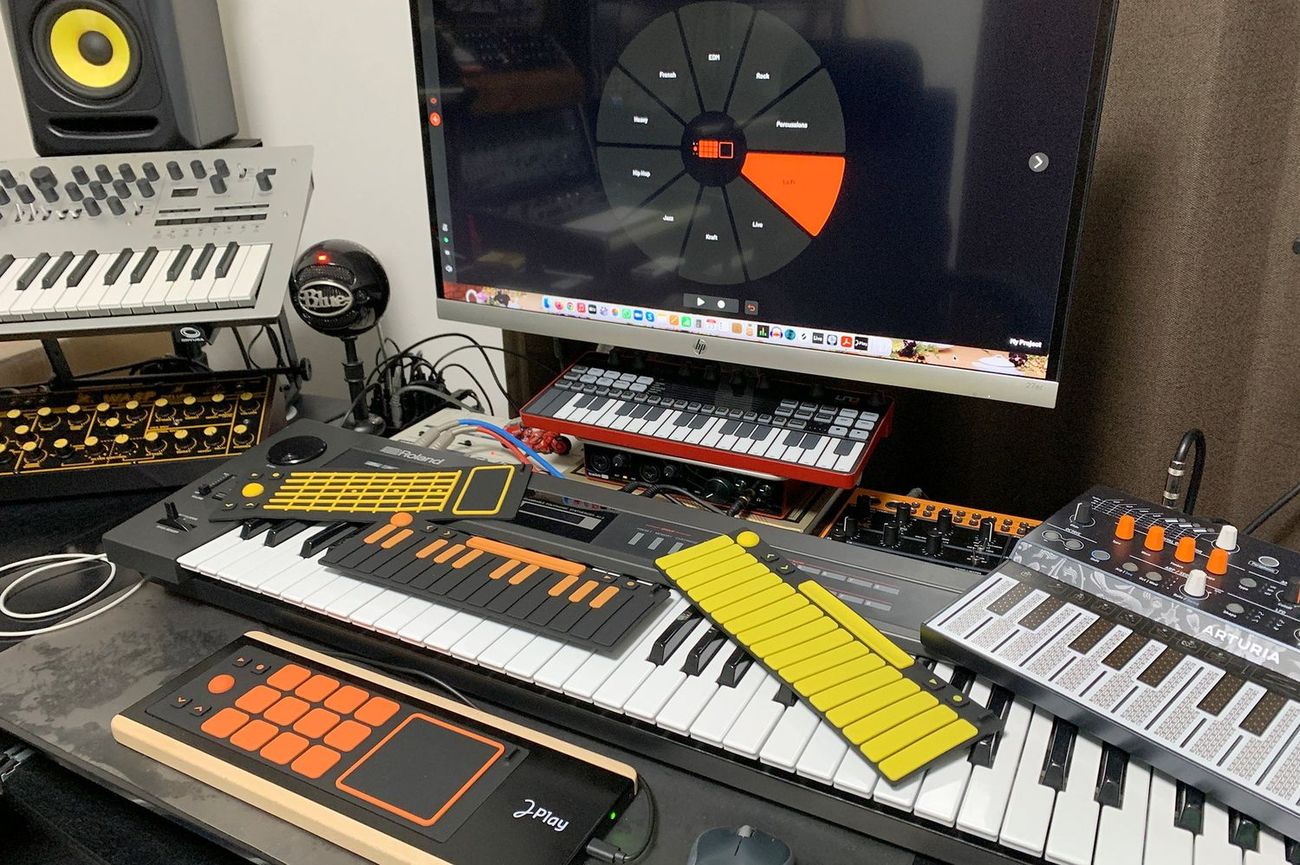

MIDI
What Is The MIDI?
Published: February 19, 2024
Discover the power of MIDI technology and its role in music production. Learn how MIDI revolutionized the way music is created and performed.
(Many of the links in this article redirect to a specific reviewed product. Your purchase of these products through affiliate links helps to generate commission for AudioLover.com, at no extra cost. Learn more)
Table of Contents
Introduction
Music is a universal language that transcends cultural boundaries and connects people from all walks of life. It has the power to evoke emotions, tell stories, and create unforgettable experiences. Behind the scenes, there is a technology that plays a crucial role in shaping the modern music landscape – MIDI.
MIDI, which stands for Musical Instrument Digital Interface, is a revolutionary protocol that has transformed the way music is created, recorded, and performed. It serves as the digital glue that links musical instruments, computers, and other electronic devices, enabling seamless communication and control.
In the realm of music production and performance, MIDI is a game-changer, offering musicians and producers unparalleled flexibility and creative possibilities. Whether you're a seasoned professional or an aspiring artist, understanding MIDI is essential for navigating the dynamic and ever-evolving music industry.
In this article, we will delve into the fascinating world of MIDI, exploring its history, functionality, applications, and the impact it has had on the music industry. From its humble beginnings to its widespread adoption, MIDI has left an indelible mark on music technology, empowering musicians to push the boundaries of creativity and innovation.
Join us on a journey through the intricate web of MIDI, where we unravel its inner workings, decode its language, and uncover the myriad ways it has revolutionized music production and performance. By the end of this exploration, you will gain a deeper appreciation for the profound influence of MIDI and its pivotal role in shaping the modern musical landscape.
History of MIDI
The history of MIDI dates back to the early 1980s, a time when electronic musical instruments were rapidly gaining popularity, and the need for a standardized communication protocol became increasingly evident. Prior to MIDI's inception, electronic musical instruments from different manufacturers operated in isolation, lacking the ability to communicate and synchronize with each other effectively.
In 1981, a group of visionary engineers and music industry leaders joined forces to address this pressing need. Their collaborative efforts culminated in the development of the Musical Instrument Digital Interface (MIDI) protocol, which was officially unveiled in 1983. This landmark achievement marked a significant turning point in the history of music technology, as MIDI emerged as the universal language for electronic musical instruments.
The MIDI protocol was designed to facilitate seamless communication between various electronic musical instruments, computers, and other devices, enabling them to exchange musical information such as note events, control signals, and synchronization data. This breakthrough innovation paved the way for unprecedented levels of integration and interoperability within the music industry, revolutionizing the process of music creation and performance.
One of the defining features of MIDI is its versatility, as it transcends the limitations of specific hardware or software platforms. This universal compatibility has been a driving force behind MIDI's enduring relevance and widespread adoption across the music industry. From synthesizers and drum machines to digital audio workstations (DAWs) and stage lighting systems, MIDI has become an integral part of modern music production and performance.
Over the years, MIDI has undergone several advancements and expansions, including the introduction of new message types, enhanced capabilities, and improved performance. These developments have further solidified MIDI's status as a fundamental component of contemporary music technology, empowering musicians, producers, and sound engineers to unleash their creative potential and bring their musical visions to life.
As we reflect on the history of MIDI, it becomes evident that its impact extends far beyond the realm of technology. MIDI has played a pivotal role in shaping the creative landscape of music, empowering artists to explore new sonic territories, experiment with innovative techniques, and push the boundaries of musical expression. Its legacy continues to resonate in the ever-evolving world of music, serving as a testament to the enduring power of innovation and collaboration in shaping the future of sound.
The evolution of MIDI stands as a testament to the enduring spirit of innovation and collaboration within the music industry, and its impact continues to reverberate across the global musical landscape.
How MIDI Works
At its core, MIDI operates on a set of principles that govern the transmission and reception of musical data between interconnected devices. Unlike audio signals, which capture sound waves directly, MIDI communicates musical information in a digital format, allowing for precise control and manipulation of musical elements.
When a musician plays a MIDI-compatible instrument, such as a keyboard or electronic drum pad, the instrument generates MIDI data in the form of note events, velocity, pitch, and duration. This data is then transmitted via a MIDI cable or USB connection to a receiving device, such as a synthesizer, computer, or digital audio workstation (DAW).
Upon receiving the MIDI data, the connected device interprets the information and produces the corresponding musical output. This process allows for seamless integration and synchronization between multiple MIDI-enabled instruments and devices, creating a cohesive musical experience.
One of the key advantages of MIDI is its ability to transmit a wide range of musical parameters, including note-on and note-off events, pitch bend, modulation, sustain pedal control, and more. This level of granularity empowers musicians and producers to capture nuanced musical expressions and articulations, enhancing the overall quality and realism of the music being performed or recorded.
Furthermore, MIDI supports multi-channel communication, enabling the simultaneous transmission of data for different musical elements. This capability is particularly valuable in scenarios where complex musical arrangements and orchestrations are involved, as it allows for independent control and manipulation of each channel's musical content.
In addition to real-time performance, MIDI also plays a crucial role in music production and composition. By leveraging MIDI, composers and arrangers can input musical notes, edit timing and dynamics, and manipulate various parameters within a DAW or notation software. This level of precision and flexibility empowers creators to craft intricate musical compositions with unparalleled control and finesse.
Overall, the functionality of MIDI is rooted in its ability to facilitate seamless communication and control across a diverse array of musical devices and software applications. By harnessing the power of MIDI, musicians, producers, and composers can unleash their creative potential and bring their musical visions to life with precision, depth, and artistry.
Types of MIDI Messages
MIDI messages serve as the digital language through which musical information is communicated between interconnected devices. These messages encompass a diverse range of musical parameters and control signals, enabling musicians, producers, and sound engineers to exert precise control over their musical performances and productions. Understanding the different types of MIDI messages is essential for harnessing the full potential of MIDI technology and leveraging its capabilities to create compelling musical experiences.
Note Messages
Note messages form the foundation of MIDI communication, representing the fundamental building blocks of musical expression. These messages convey information about the initiation (note-on) and cessation (note-off) of musical notes, including attributes such as pitch, velocity, and duration. By transmitting note messages, MIDI-enabled instruments and devices can accurately reproduce the nuances of a performer's musical gestures, capturing the subtleties of dynamics and articulation.
Control Change Messages
Control change messages encompass a broad spectrum of parameters that can be manipulated in real time, allowing for dynamic control over various aspects of musical performance. These messages enable musicians to adjust parameters such as volume, pan, modulation, and other continuous control functions, shaping the sonic character of the music as it unfolds. Additionally, control change messages are instrumental in interfacing with MIDI-compatible hardware controllers, offering tactile and expressive means of interacting with digital instruments and software.
Program Change Messages
Program change messages facilitate the selection and switching of instrument sounds or presets within MIDI-compatible devices. By sending program change messages, musicians and producers can seamlessly transition between different instrument settings, accessing a diverse palette of sounds and timbres to enrich their musical arrangements. This capability is particularly valuable in live performance settings, where quick and seamless sound changes are essential for delivering captivating and dynamic musical experiences.
Pitch Bend and Modulation Messages
Pitch bend and modulation messages introduce expressive capabilities that transcend the static nature of traditional musical instruments. Pitch bend messages enable performers to manipulate the pitch of notes in a fluid and expressive manner, simulating the nuances of string bends, vocal inflections, and other dynamic pitch variations. Similarly, modulation messages allow for the real-time control of sound modulation parameters, adding depth and character to musical performances through subtle or dramatic sonic transformations.
System Exclusive Messages
System exclusive (SysEx) messages provide a mechanism for transmitting proprietary or device-specific data between MIDI-compatible devices. This versatile message type allows for the exchange of custom settings, firmware updates, and specialized control information, facilitating seamless integration and interoperability across a diverse array of MIDI-enabled hardware and software. SysEx messages play a crucial role in unlocking the full potential of MIDI technology, enabling deep customization and optimization of musical devices and systems.
Summary
In summary, the diverse array of MIDI messages empowers musicians, producers, and sound designers to craft compelling musical experiences with precision, expressiveness, and versatility. By leveraging note messages, control change messages, program change messages, pitch bend and modulation messages, and system exclusive messages, creators can harness the full potential of MIDI technology, unlocking a world of creative possibilities and shaping the sonic landscape of modern music.
Uses of MIDI
MIDI's versatility and flexibility have positioned it as a cornerstone of modern music production, performance, and technology. Its widespread adoption across various domains within the music industry underscores its indispensable role in shaping the creative landscape. Let's explore the diverse and impactful uses of MIDI that have revolutionized the way music is created, recorded, and performed.
Music Production and Composition
MIDI serves as a fundamental tool for music production and composition, empowering composers, arrangers, and producers to craft intricate musical arrangements with precision and creativity. By leveraging MIDI, composers can input, edit, and manipulate musical notes, dynamics, and articulations within digital audio workstations (DAWs) and notation software. This level of control enables the creation of complex orchestrations, realistic instrument simulations, and seamless integration of diverse musical elements, laying the groundwork for captivating musical compositions.
Live Performance and Stage Production
In the realm of live performance, MIDI plays a pivotal role in enhancing the sonic and visual aspects of stage productions. Musicians utilize MIDI to trigger backing tracks, synchronize lighting and visual effects, and control instrument parameters in real time. This seamless integration of MIDI technology enables artists to deliver immersive and dynamic live performances, blurring the lines between musical expression and technological innovation. Whether it's triggering sampled sounds, automating stage lighting, or synchronizing multimedia elements, MIDI empowers performers to captivate audiences with compelling and multi-sensory experiences.
Sound Design and Electronic Music Production
For sound designers, electronic music producers, and synthesizer enthusiasts, MIDI offers a wealth of creative possibilities. It serves as a conduit for shaping and manipulating sound parameters, enabling the creation of evolving textures, intricate soundscapes, and expressive sonic gestures. MIDI controllers, such as keyboards, pads, and knob-based interfaces, provide tactile avenues for real-time interaction with synthesizers and virtual instruments, fostering a dynamic and hands-on approach to sound design. Additionally, MIDI's seamless integration with modular synthesizers and digital signal processing (DSP) systems expands the horizons of sonic experimentation, driving innovation and pushing the boundaries of electronic music production.
Education and Musical Training
In educational settings, MIDI technology plays a vital role in music instruction and training. Students and educators benefit from MIDI's interactive and adaptive learning tools, which facilitate music theory instruction, ear training, and composition exercises. MIDI-enabled software and hardware provide a practical platform for students to explore musical concepts, experiment with arrangement techniques, and gain hands-on experience in music production. This educational use of MIDI fosters a deeper understanding of music fundamentals and technology, nurturing the next generation of musicians, producers, and music enthusiasts.
Integration with Multimedia and Interactive Art
MIDI's versatility extends beyond traditional music applications, encompassing integration with multimedia and interactive art installations. Artists and creators leverage MIDI to synchronize audiovisual elements, interactive installations, and immersive experiences, blurring the boundaries between music, technology, and visual art. Whether it's controlling generative visuals through MIDI data, orchestrating interactive sonic environments, or integrating MIDI-triggered elements into immersive art installations, MIDI serves as a conduit for cross-disciplinary collaboration and innovation, enriching the intersection of music and multimedia art.
In essence, the uses of MIDI span a diverse spectrum of creative endeavors, from music production and live performance to sound design, education, and multimedia art. Its adaptability and ubiquity have transformed the way we engage with music, technology, and artistic expression, shaping a dynamic and interconnected landscape where innovation and creativity converge. As MIDI continues to evolve and inspire new generations of creators, its impact on the world of music and technology remains profound and enduring.
Advantages and Disadvantages of MIDI
MIDI, as a fundamental technology in music production and performance, offers a multitude of advantages that have revolutionized the creative process. At the same time, it presents certain limitations and challenges that warrant consideration. Understanding the advantages and disadvantages of MIDI is crucial for navigating its impact on music creation and performance.
Advantages
Versatility and Interoperability
One of the primary advantages of MIDI lies in its universal compatibility and interoperability across a wide range of musical instruments, hardware devices, and software applications. This versatility allows musicians and producers to seamlessly integrate MIDI-enabled equipment, regardless of the manufacturer or platform, fostering a cohesive and interconnected music production environment.
Precision and Control
MIDI empowers musicians to exert precise control over musical parameters, including note events, dynamics, and expression. This level of granularity enables nuanced performances and meticulous editing within digital audio workstations (DAWs), offering a degree of precision that transcends traditional analog instrumentation.
Flexibility in Sound Design
For sound designers and electronic music producers, MIDI provides a flexible framework for sculpting and manipulating sound parameters. This adaptability facilitates the creation of complex textures, evolving timbres, and dynamic sonic landscapes, driving innovation and experimentation in electronic music production.
Real-time Performance Capabilities
In live performance settings, MIDI enables artists to trigger backing tracks, synchronize lighting and visual effects, and control instrument parameters in real time. This real-time performance capability enhances the immersive and dynamic nature of live shows, offering artists the flexibility to deliver captivating and multi-sensory experiences to their audiences.
Disadvantages
Limitations in Expressive Nuances
While MIDI excels in capturing precise note events and control signals, it may encounter challenges in reproducing the nuanced expressive qualities inherent in acoustic instruments. Factors such as subtle variations in timbre, articulation, and phrasing may present limitations in achieving the organic depth and richness of acoustic performances.
Latency and Timing Issues
In certain scenarios, MIDI communication may be susceptible to latency and timing discrepancies, particularly in complex setups or when interfacing with multiple devices. These issues can impact the synchronization of musical elements and introduce challenges in maintaining precise timing and alignment, requiring meticulous attention to system optimization and performance considerations.
Dependency on Hardware and Software Compatibility
The seamless functionality of MIDI hinges on the compatibility and stability of interconnected hardware and software components. Incompatibility issues, driver conflicts, and software limitations may pose challenges in achieving seamless integration and reliable performance, necessitating thorough testing and troubleshooting to ensure a cohesive MIDI environment.
Complexity in Setup and Configuration
Setting up and configuring MIDI-based systems, especially in multi-device or multi-channel setups, can be complex and require a deep understanding of MIDI protocols and device interoperability. Managing signal routing, addressing channel assignments, and troubleshooting connectivity issues demand meticulous attention to detail and technical expertise.
In essence, the advantages of MIDI encompass its versatility, precision, flexibility, and real-time performance capabilities, while the disadvantages encompass limitations in expressive nuances, latency and timing issues, dependency on hardware and software compatibility, and complexity in setup and configuration. By acknowledging these facets, musicians, producers, and sound engineers can leverage the strengths of MIDI while navigating its inherent challenges, fostering a harmonious synergy between technology and creativity.
Conclusion
In conclusion, the impact of MIDI on the music industry is profound and far-reaching, transcending the realm of technology to shape the very essence of musical creativity and expression. From its humble beginnings in the early 1980s to its pervasive presence in modern music production and performance, MIDI has revolutionized the way musicians, producers, and sound designers interact with technology, enabling them to push the boundaries of sonic innovation and artistic exploration.
The evolution of MIDI stands as a testament to the enduring spirit of innovation and collaboration within the music industry, and its impact continues to reverberate across the global musical landscape. As a universal language for musical communication, MIDI has fostered a culture of integration and interoperability, bridging the gap between disparate musical devices and software platforms. This interconnected ecosystem has empowered artists to seamlessly blend traditional instrumentation with cutting-edge technology, resulting in a rich tapestry of musical possibilities.
Furthermore, MIDI's role in live performance and stage production has elevated the concert experience to new heights, allowing artists to deliver captivating and immersive shows that transcend traditional boundaries. By harnessing the power of MIDI, musicians can seamlessly integrate backing tracks, synchronize lighting and visual effects, and exert real-time control over instrument parameters, offering audiences a multi-sensory journey through sound and spectacle.
In the realm of music production and composition, MIDI has become an indispensable tool for composers, arrangers, and producers, providing a canvas for intricate musical arrangements, realistic instrument simulations, and seamless integration of diverse musical elements. The precision, flexibility, and creative potential afforded by MIDI have empowered creators to craft compelling compositions and productions with unparalleled depth and artistry.
As we look to the future, MIDI continues to inspire new generations of musicians, producers, and technologists, driving innovation and creativity in the ever-evolving landscape of music and technology. Its adaptability and ubiquity have transformed the way we engage with music, technology, and artistic expression, shaping a dynamic and interconnected ecosystem where innovation and creativity converge.
In essence, MIDI's enduring legacy serves as a testament to the transformative power of technology in the realm of music, illustrating how a revolutionary protocol can transcend its technical origins to become an integral part of the creative process. As MIDI continues to evolve and inspire new frontiers of musical expression, its impact on the world of music and technology remains profound and enduring, paving the way for a future where innovation and creativity harmoniously intersect.



